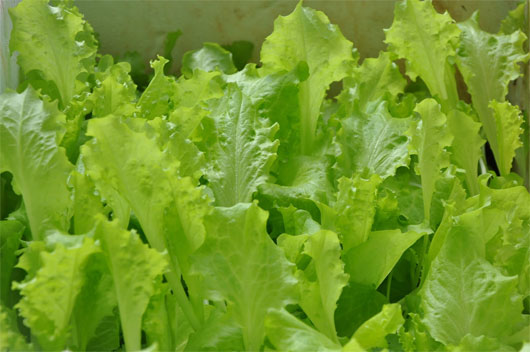NASA has put a vegetable garden on the universe
On 4/5, the US Aerospace Agency (NASA) announced that it has put a vegetable garden on the International Space Station (ISS). Thus, astronauts will have the opportunity to eat fresh vegetables while on orbit.
>>>NASA will grow lettuce on the universe
According to Live Science, NASA said SpaceX had delivered 2.5 tons of cargo to ISS to supply astronauts. There was a vegetable growing room called Veggie .

NASA will grow lettuce on ISS - (Photo: msgrassland.blogspot.com)
Veggie uses a red and green LED system, creating a purple light stream to facilitate photosynthesis.
In addition, Veggie has a green LED. When all three lights were on, Veggie's light emitted was a bright purple. NASA chose to use LED lights because they work for a long time.
'Veggie will help astronauts study orbital cultivation' , ' NASA expert Gioia Massa said.
The seeds that NASA put on orbit for planting are lettuce and zinni. Astronauts on ISS will have to send their first harvest to Earth to test whether they are safe to eat or not. After that, the astronauts have the opportunity to enjoy fresh vegetables grown by themselves.
British Guardian newspaper quoted Professor Ian Crawford of the University of London (UK), said the ability to grow food on the universe will be very important for long-term space missions, especially when in the future people can 'settled' on the Moon or Mars.
- NASA is about to set up a vegetable garden on the moon
- In order to eradicate dirty food, the Germans had an amazingly great discovery
- Garden of digital vegetables is unique in Japan
- Garden 'standing' on the wall thanks to bio-concrete
- NASA opens the door to document 140,000 stunning images of the universe for the whole world
- It is possible to grow vegetables in the universe
- Vegetable-free vegetable plant in China
- Vegetable oil is warned about the risk of causing illness to users
- Equipment to grow vegetables in the room
- Home generator powered by vegetable oil
- Universe image from the corner of the garden conquered astronomers
- Discover 400,000 years of mammoth tusks in Siberia
 Van Allen's belt and evidence that the Apollo 11 mission to the Moon was myth
Van Allen's belt and evidence that the Apollo 11 mission to the Moon was myth The levels of civilization in the universe (Kardashev scale)
The levels of civilization in the universe (Kardashev scale) Today Mars, the sun and the Earth are aligned
Today Mars, the sun and the Earth are aligned The Amazon owner announced a secret plan to build a space base for thousands of people
The Amazon owner announced a secret plan to build a space base for thousands of people